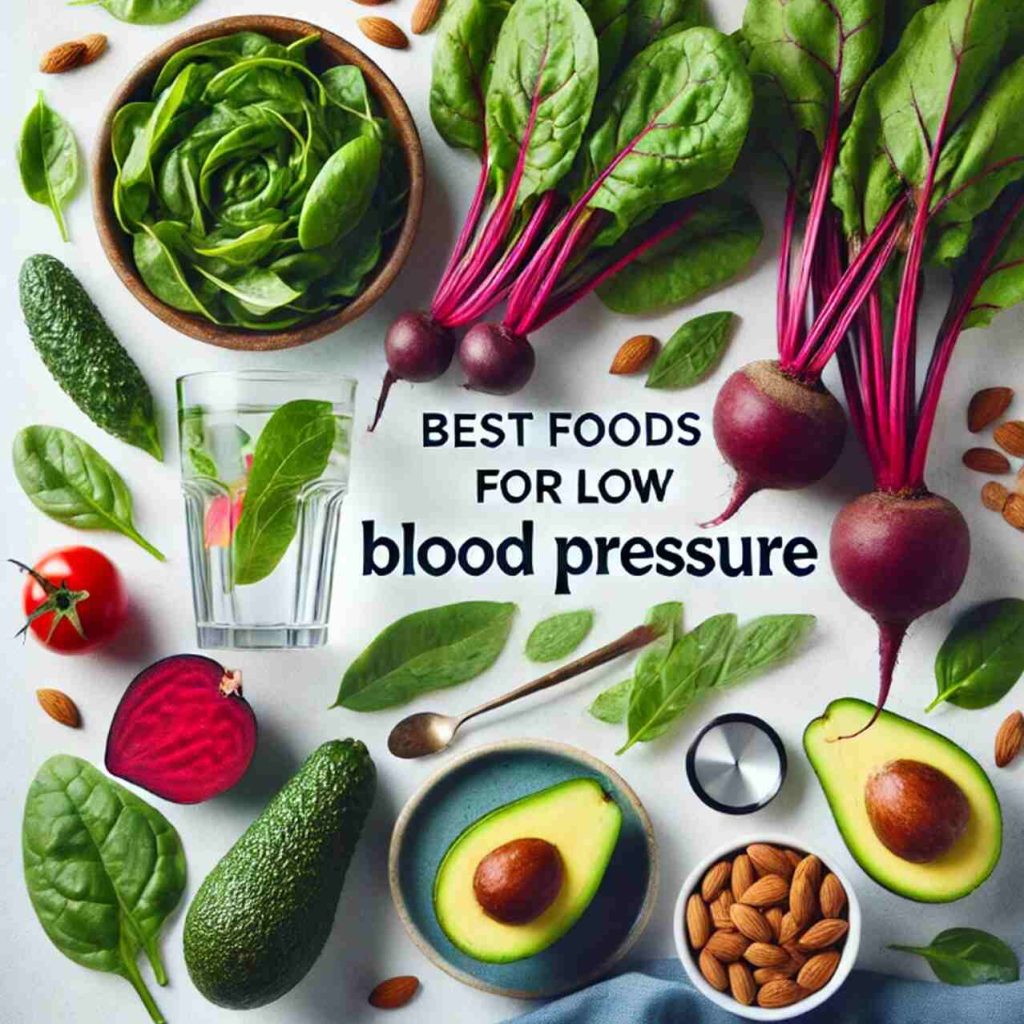High blood pressure, also known as hypertension, is a common health concern that can increase the risk of heart disease and stroke. However, it is possible to manage and lower blood pressure through lifestyle changes, such as a balanced diet. Incorporating the best low-blood-pressure foods, such as those rich in potassium, magnesium, and fiber significantly reduces blood pressure.
High blood pressure can be a sign of underlying health conditions, but by making some simple dietary changes, you may be able to help lower it. Here are some delicious foods that can easily be incorporated into your diet to help keep your blood pressure in check.
High blood pressure can indicate the presence of other health issues, but fortunately, it can be managed through simple modifications to your diet. Including these tasty and easily obtainable foods in your meals, you can assist in regulating your levels.
Include High-Potassium Foods:
Potassium is one of the essential minerals for reducing blood pressure levels. Potassium helps relax the walls of your arteries and veins, which results in a more efficient flow of blood. It also works to counterbalance the harmful effects of sodium on blood pressure. Adding high-potassium foods like bananas, tomatoes, avocados, yams, potatoes, and spinach can help naturally reduce hypertension.
If you’re struggling to get the recommended amount of potassium through diet alone, consider adding a potassium supplement to your daily routine. However, it is essential to note that supplements should only be taken upon medical advice, as high amounts of potassium can also lead to adverse health effects in people with existing kidney problems. By including natural sources of potassium in your diet and having regular checkups with a doctor, you can help ensure that your body has the right amount it needs.
Eat Dark, Leafy Green Vegetables:
Incorporating dark, leafy greens like spinach and kale into your diet is one of the best things you can do to lower blood pressure. Not only are they packed with potassium, but these superfoods also contain other beneficial nutrients like Magnesium and vitamins C and K. Studies have found that people who eat foods high in potassium are also protected against stroke and improved kidney function.
Consuming dark leafy greens regularly is a simple way to reduce. Preparing them by steaming or sautéing helps to keep their nutrient content intact, and adding some healthy fats can also help increase their absorption. You can also juice these nutritious foods for a quick snack or meal. A green smoothie with spinach, kale, and cucumber is exceptionally hydrating and can provide the perfect balance of nutrients to improve your blood pressure.
Add Bananas and Citrus Fruits to Your Diet:
Another great way to lower your blood pressure is adding bananas and citrus fruits like oranges and grapefruit to your diet. Bananas are a great source of potassium, which has been proven to help reduce the risk of stroke and kidney disease by regulating fluid balance in our bodies. Citrus fruits, on the other hand, are packed with vitamin C to help protect your cells from damage and inflammation. Eating more bananas or citrus fruits could be just what you need for improved cardiovascular health!
Bananas and citrus fruits are an easy addition to any diet, and you can add them in many ways. You can eat them as snacks on their own, mix them into your cereal or oatmeal for breakfast, toss them into a green salad at lunchtime, or have some banana slices with your afternoon yogurt. Citrus fruits like oranges and grapefruit are great additions to smoothies, while grapefruits can be added to your dinner plate in the form of half of a grapefruit with granola and honey – yum! No matter what form they take, adding more bananas and citrus fruits to your diet is a delicious way to help lower blood pressure.
Choose Whole Grains Over Refined Grains:
Not only do they provide essential vitamins and minerals, but they are also excellent sources of dietary fiber. Eating whole-grain keeps you fuller for longer and helps regulate blood sugar levels. This is especially helpful when trying to maintain healthy levels of blood pressure. Also, compared to their refined counterparts, whole grains are much better at maintaining healthy cholesterol levels in the body. So try switching out white rice or pasta for a wholesome brown rice or quinoa meal instead!
Opt for Healthy Fat Sources like Nuts and Seeds:
Eating healthy fat sources can enormously influence keeping levels in check. Nuts and seeds are a great source of healthy fats like Omega-3 and Omega-6 fatty acids. Also, their high fiber content can keep you feeling fuller for longer, which helps to control your caloric intake. Walnuts and sunflower seeds sprinkled into salads or eaten as snacks are excellent choices for maintaining blood pressure balance.
Eating fatty fish at least twice a week can provide adequate Omega-3s and keep your blood pressure healthy. Salmon, herring, sardines, and mackerel are all excellent sources of Omega-3s. Eating foods high in Magnesium, such as spinach, quinoa, and pumpkin seeds, can also help reduce levels naturally.
Conclusion
In conclusion, incorporating foods into your diet can significantly impact maintaining healthy blood pressure levels. Foods rich in potassium, magnesium, and fiber effectively reduce blood pressure. Incorporating these foods into your diet can be as simple as adding bananas, leafy greens, nuts, and whole grains. Reducing your intake of processed foods, salt, and added sugars can also help improve blood pressure. You can help keep your blood pressure in check and improve your overall health with a few simple changes.
Check out our YouTube channel for more content! Eenact – DIY Crafts

